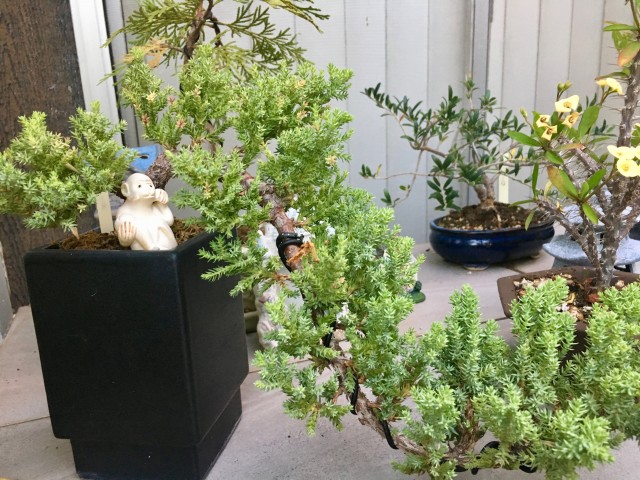In this article, we’ll show you the pruning techniques that will help you create the perfect shape for your bonsai.
With the right tools, timing, and frequency, you’ll be able to shape your bonsai branches just the way you want.
Not only will these techniques improve the aesthetics of your bonsai, but they will also promote its overall health and vigor.
So, let’s dive in and start shaping your bonsai masterpiece!
Understanding Bonsai Pruning
Understanding bonsai pruning is essential in achieving the desired shape and appearance of the tree. When it comes to mastering bonsai pruning techniques, there are a few common mistakes to avoid.
First, make sure to avoid cutting too much at once. It’s important to take your time and make small, precise cuts to maintain the health and balance of the tree.
Additionally, be mindful of where you make your cuts. Cutting too close to the trunk or main branches can lead to irreversible damage. Instead, aim to prune just above a bud or branch to encourage new growth in the desired direction.
Selecting the Right Pruning Tools
To select the right tools for the job, you’ll need to consider the size and type of branches you’ll be working with.
Pruning tool maintenance is crucial for keeping your tools in good condition and ensuring they perform optimally. Regular cleaning and sharpening will help prolong their lifespan and make pruning easier.
Different types of pruning cuts are used to achieve specific results. The heading cut is made to shorten a branch and promote new growth. The thinning cut removes an entire branch or stem to improve the overall structure of the tree. The pinching cut is used to remove the tips of new shoots, encouraging branching and denser foliage.
Timing and Frequency of Pruning
The timing and frequency of pruning depends on the specific needs of your tree and its growth patterns.
One important factor to consider is pruning during dormancy. This is the period when your tree is in a dormant state, usually in winter. Pruning during this time has several benefits.
First, it allows you to see the tree’s structure more clearly without the distraction of leaves. This makes it easier to identify and remove any dead or diseased branches.
Second, pruning during dormancy promotes new growth in the spring. By removing certain branches, you can direct the tree’s energy towards the desired areas, resulting in a more balanced and aesthetically pleasing shape.
Regular pruning also helps maintain the overall health and vigor of your tree, ensuring its longevity and beauty.
Techniques for Shaping Bonsai Branches
When shaping bonsai branches, it’s important to consider the desired form and carefully trim and train the branches accordingly. Pruning aesthetics play a crucial role in creating the perfect bonsai shape.
One shaping technique is known as ‘clip and grow,’ where you prune back the branches to encourage new growth in desired areas. This method allows you to shape the branches gradually over time.
Another technique is wiring, which involves wrapping a thin wire around the branches to bend and position them in the desired direction. Care must be taken not to damage the branches while wiring.
Additionally, directional pruning is used to guide the growth of branches towards a specific direction, creating a more balanced and harmonious bonsai design.
Pruning for Bonsai Health and Vigor
Careful trimming and training of branches is essential for maintaining the health and vigor of bonsai trees.
When it comes to pruning for aesthetics, it is important to consider the overall shape and size of the bonsai. By selectively removing branches, you can create a more balanced and visually appealing tree.
Regular pruning also helps to maintain the bonsai size, preventing it from becoming overgrown and losing its miniature appearance. Trimming back new growth encourages branching and denser foliage, giving the bonsai a fuller and more defined shape.
It is crucial to prune with precision, using sharp and clean tools to make clean cuts. Remember to remove any dead, damaged, or crossing branches to promote proper airflow and prevent the spread of diseases.
With careful pruning, you can ensure the health and longevity of your bonsai tree while achieving the desired aesthetic.
Conclusion
To conclude, mastering the art of bonsai pruning is essential for creating the perfect shape for your miniature tree. By understanding the principles behind bonsai pruning and selecting the right tools, you can effectively shape and maintain your bonsai.
Remember to consider the timing and frequency of pruning, as well as using proper techniques for shaping branches.
Lastly, pruning is not only for aesthetic purposes, but also for the health and vigor of your bonsai. So keep practicing and enjoy the beauty of your perfectly shaped bonsai tree.









